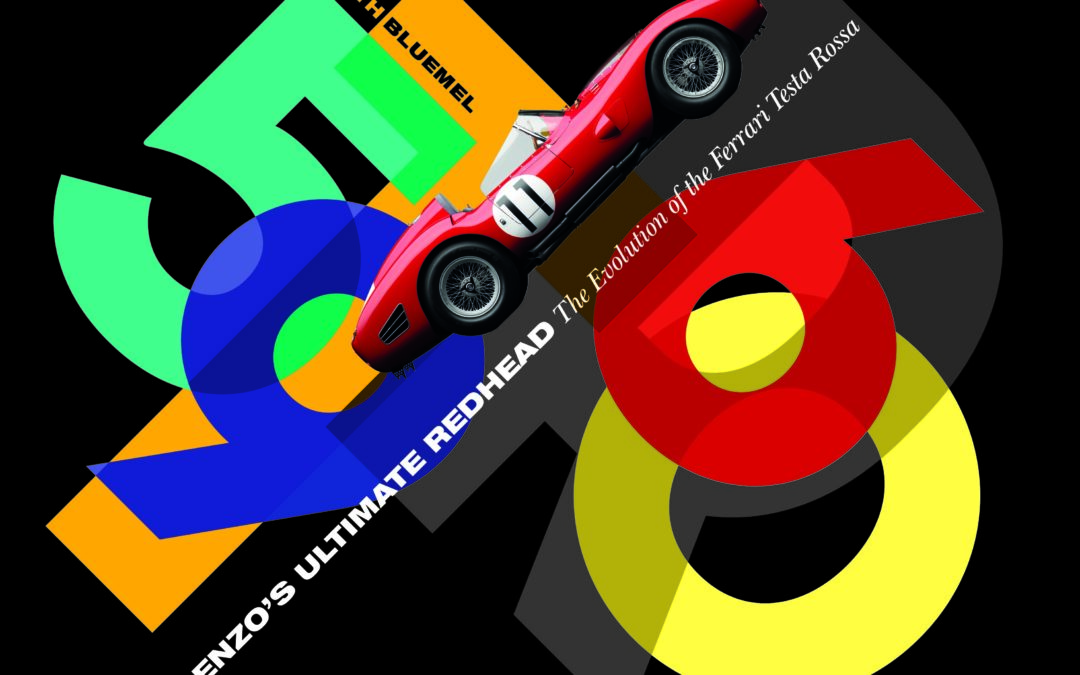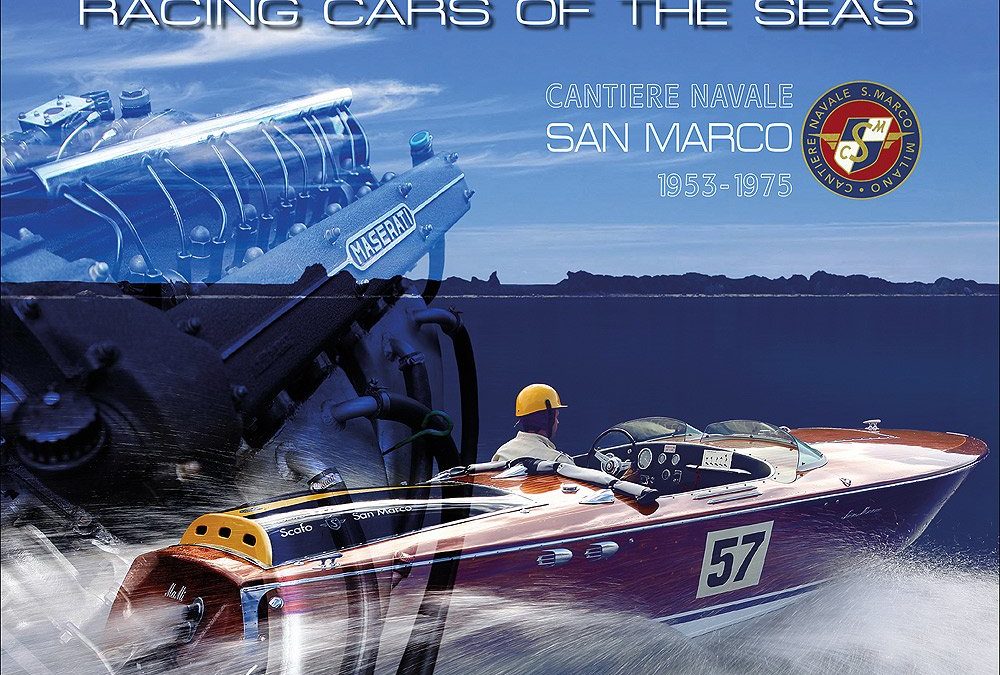
From 1954 to 1975, the Milan-based San Marco boatyard wrote some of the most interesting pages in the post-war history of powerboating. San Marco is the only yard that has extensively used Italian car engines for both its racing and production boats, including those of Ferrari, Maserati, Alfa Romeo, Lancia, Fiat and Abarth. The yard produced such models as the 600 Del Mare, Giulietta del Mare, Appia; all fast and prestigious wooden runabouts with elegant lines and refined details. Like a fashion designer or a famous Italian coachbuilder, for over 20 years Oscar Scarpa, founder of the yard, promoted a tradition of excellence, building several hundred exclusive boats with his son Sandro each with unique specifications, either technical or aesthetic, and all beautifully finished. The San Marco boatyard has also enjoyed a successful racing career, with more than 30 world speed records and hundreds of victories to its credit at the highest competitive level – often with Oscar Scarpa in the driver’s seat! This book is both a tribute to the full history of the San Marco boatyard and its unique contribution to the world of speed boats. Racing Cars of the Seas is illustrated with a remarkable collection of hundreds of unpublished archival documents and photographs, as well as detailed information, including extensive production and racing records.
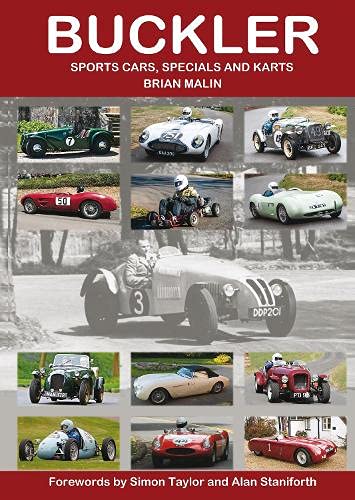
Although they were born 18 years apart, Derek Buckler and Colin Chapman were contemporaries when it came to designing and building ground-breaking sports cars in the late 1940s and early ’50s. They had much in common. Both were innovators, especially in areas of chassis design and improving the handling characteristics of their cars. Both founded successful companies and both died relatively young, Chapman in December, 1982, at the age of 54, and Buckler in 1964 at just 53 years of age. Yet, while Chapman’s Lotus went on to achieve worldwide fame, the name Buckler remains comparatively little known.
Special building was popular in the 1950s, mostly using ‘donor’ chassis from Austin 7 or Ford or simple ‘ladder’ frames but Buckler offered a multi-tubular space frame which was both stronger and lighter and, moreover, available in different models to suit different applications. He was also always ready to adapt his products to his customers’ requirements. In all of this, Buckler’s aim was to provide the impecunious enthusiast with a versatile sporting vehicle which could be used as daily transport during the week and, at weekends, in a wide range of motor sporting events from trials and driving tests to out and out racing. Often, however, the resulting Special would carry a name that concealed the Buckler contribution and a major part of the significance of Malin’s book and the vast amount of painstaking research put into it by its author is that much of that contribution is now revealed.
Buckler also, of course, made a range of complete cars starting with the versatile Mk5 and 6 and going on to encompass DD1 and DD2 with De Dion rear ends and the BB100 with backbone chassis introduced considerably before Lotus’s Elan and their other similarly based models. When karting became popular in the early 1960s, Buckler’s space frame technology found another application for which it was ideal and it became a major player in this burgeoning branch of motor sport. Buckler was also successful with its range of accessories including engine and transmission components and most notably its much admired close-ratio gears.
Brian Malin, the author, first owned a Buckler car in the 1970s and today competes in his Mk 5 in hill climbs and other events. He is an active member of the Buckler Register as well as the British Historic Kart Club and is often to be seen racing or demonstrating his Buckler kart so he is well placed to compile this comprehensive history of all things Buckler. It was first made available in loose-leaf form as long ago as 1990 but this is its first publication as a fully-fledged book, revised, updated and with additional material. Chassis design guru – and Buckler owner – the late Alan Staniforth provided the original foreword and this has been updated and included along with a new foreword by commentator and doyen of motor sport journalists, Simon Taylor.
The fourteen chapters begin with ‘Buckler and the Company’, cover the production and racing cars with some individual histories, the Buckler accessories including one chapter on the badges alone, overseas distribution – New Zealand was a particularly strong market for Buckler – and a fascinating section on the car advertisements before going on to cover the kart story in similar detail. The same number of appendices include reproductions of road tests, articles written by Derek Buckler, specifications of close-ratio gears and Buckler-tuned Ford engines, kart track tests and even one on Buckler letterheads. Malin’s work is truly encyclopaedic and therefore remarkable value for money not just as a reference on the Buckler marque but for its entertaining insight into the world of amateur motor sport of its time. The hundreds of illustrations range from reproductions of high quality contemporary and recent photographs to some admittedly lower quality originals, some of them obviously retouched to improve clarity, whose inclusion is well justified for their essential contribution to the Buckler story.
Brian Malin is to be congratulated for his perseverance in finally bringing to publication a book which is, to all intents and purposes, the full Buckler story.

#1 SUNDAY TIMES BESTSELLER • A high-octane, no-holds-barred account of a year inside Formula 1 from Haas team principal Guenther Steiner, star of Drive to Survive, one of the most successful Netflix series of all time
“People talk about football managers being under pressure. Trust me, that’s nothing. Pressure is watching one of your drivers hit a barrier at 190mph and exploding before your eyes…”
In Surviving to Drive, Haas team principal Guenther Steiner brings readers inside his Formula 1 team for the entirety of the 2022 season, giving an unobstructed view of what really takes place behind the scenes. Through this unique lens, Steiner guides readers on the thrilling rollercoaster of life at the heart of high-stakes motor racing. Packed full of twists and turns, from pre-season preparations to hiring and firing drivers, from the design, launch, and testing of a car to the race calendar itself–Surviving to Drive is the first time that an Formula 1 team has allowed an acting team principal to tell the full story of a whole season.
Uncompromising and searingly honest, told in Steiner’s inimitable style, Surviving to Drive is a fascinating and hugely entertaining account of the realities of running a Formula 1 team.
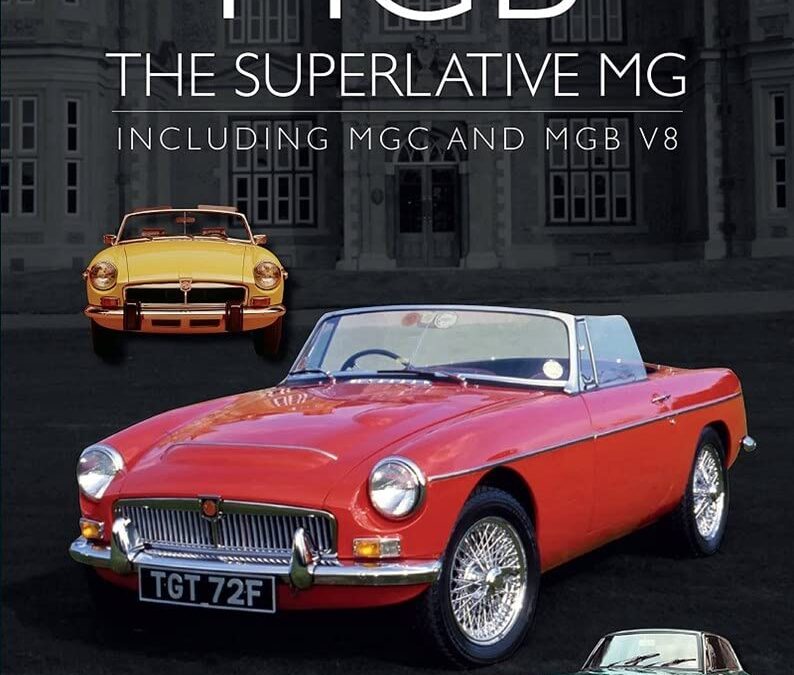
Launching in 1962 and in production for eighteen years, the MGB became one of the most successful sports cars the world has ever known. MGB – The Superlative MG describes how the MGB arose principally from the ideas of one man, MG’s Chief Engineer, Syd Enever, how it was designed and developed, how it survived and thrived, and how it became the classic car still so highly regarded today. With over 620 archive and specially commissioned photographs, including previously unseen models, sketches and prototypes, and packed with tables and data, it includes how the drive to replace the revolutionary MGA led to the development of the MGB, with the key personnel involved at each stage. It goes on to describe the genesis of the Pininfarina-refined MGB GT, and the Ferranti MGB hardtop as well as the MGC and incredible lightweight MGC GTS – including, for the first time, what became of the factory cars when first sold. The story of Ken Costello and his MGB V8, and the factory MGB GT V8 is covered along with the evolution of the MGB through the difficult period of British Leyland to the tragic end of the Abingdon factory. The full story of the lost cause of the Aston Martin Lagonda bid to rescue Abingdon and the MGB – including political and commercial insight is given along with detailed insight from many people who were closely involved in the creation, development and ultimate demise of the MGB. The motorsports story of the MGB family, including race details, insiders’ stories and key racer biographies is covered. Finally, the sales and marketing of the MGB in its two principal sales markets, including the clever advertising campaigns and commercials is covered and details of the overseas assembly of the MGB, in particular Ireland and Australia.

Lightning Strikes—The Lockheed P-38 tells the full story of one of the most successful and versatile aircraft of the Second World War. The P-38 (including its F-4 and F-5 photo reconnaissance models) eventually served with all the USAAF’s numbered overseas air forces, from early 1942 to VJ Day. The book describes the Lightning’s design and its technical details as it gradually evolved and improved, from the original XP-38 to its final variant, the P-38L-5. The main focus is on its service in the combat theaters, from the frigid, windswept Aleutian Islands in the North Pacific to the steaming jungles of the South Pacific and Southeast Asia, the burning sands of North Africa and the more temperate climes of Europe. All the units that flew the Lightning are included, as are the experiences of many of their pilots and ground crewmen as they fought the Japanese Empire and the European Axis. Also related are the P-38’s service with foreign (non-U.S.) air forces, its postwar commercial utilization as civilian aircraft and the surviving examples in museums around the world. The book is extremely well illustrated with nearly 400 high-resolution photographs, artworks, and graphics, and is supplemented by detailed appendices.
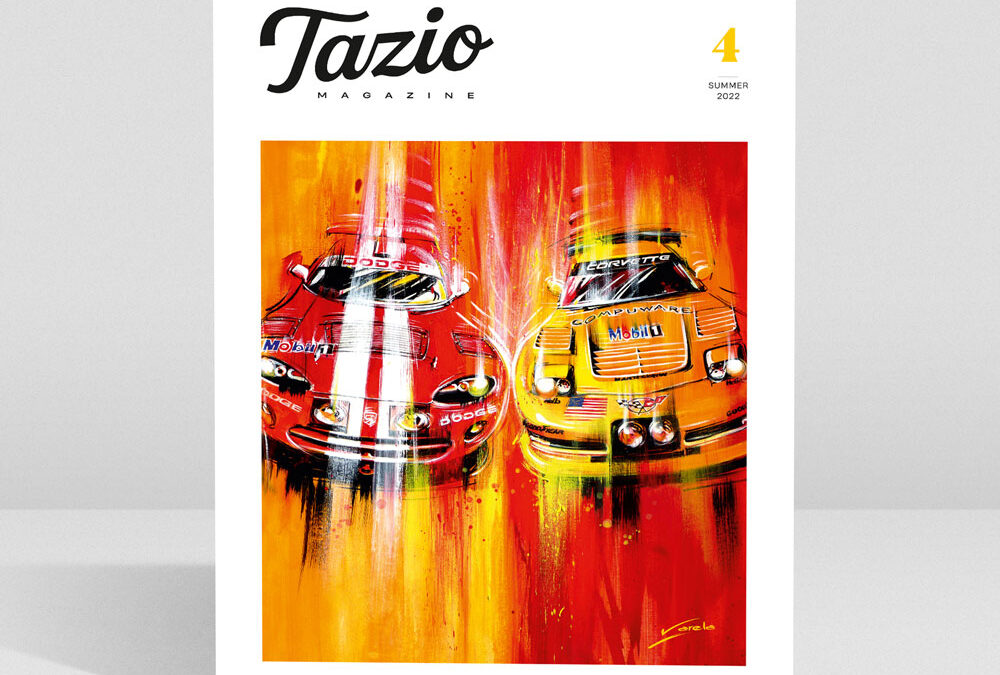
Tazio Magazine
Issue 4 – Summer 2022
Inside:
- Dodge Viper GTS-R versus Chevrolet Corvette C5-R. We look back on GT-racing’s greatest fight in the 2000 ALMS season… and we drive the cars.
- Walter Röhrl turned 75 in March. We asked our columnist Christian Geistdörfer to write up a very personal portrait.
- AC Cobra 260. This was the car students used at the Carroll Shelby School of High Performance Driving at Riverside. Now, the car accepts on more student on board; us.
- Colin Chapman’s was Lotus’ genius designer. Chapman’s career as a racing driver is less well-known. We set that right.
- A detailed look at the Ford Escort RS1700T, Ford’s first Group B project that was canned at the last minute. “It could have changed my career,” says M-Sport’s Malcolm Wilson, who was signed up to drive it in the WRC in 1983.
- Skoda had the 1100 OHC ready to go to Le Mans in 1958. And then the Iron Curtain came down hard in Eastern Europe. We discover a gem that could have made life difficult for Lotus and Tojeiro.
- Tazio and Achille, friends off track, bitter rivals behind the wheel. We take an in-depth look at racing’s greatest rivalry that started on two wheels and continued on four wheels. For fifteen years, Tazio Nuvolari and Achille Varzi crossed swords on the race tracks.
- Hurley Haywood on Walter Röhrl, Steve Soper on Bathurst, Christian Geistdörfer on the Bandama rally in 1982 and Mike ‘Rocky’ Rockenfeller looks back on the highs and lows in his career with Audi Sport.
- And so much more.
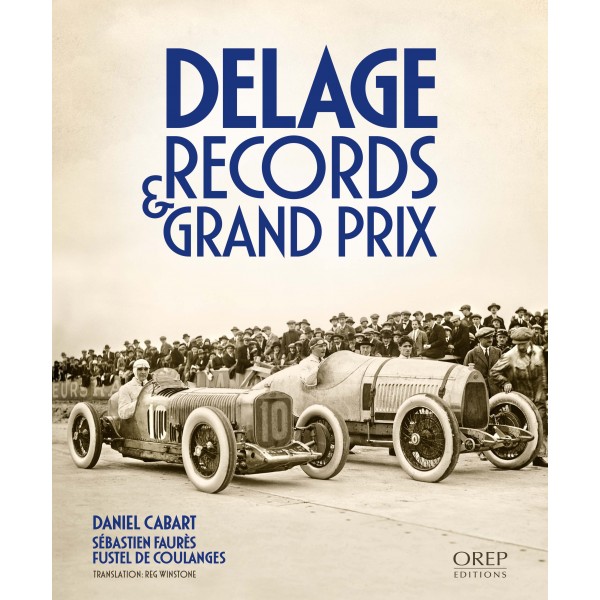
In 2017, Delage Champion du Monde told the story of the Delage team’s successes in the 1926 and 1927 Grand Prix seasons – and now, here at last is the first full account of the journey that led to the world title. Delage’s official return to racing in 1922 was followed by four years of intense activity during which the Courbevoie firm pulled out all the stops, competing in hillclimbs, endurance races, Grand Prix and land speed records. Rarely in the history of motor racing has a marque contested so many disciplines at once.
Even more remarkably, the factory entries for these events all employed different technologies: four, six and twelve cylinders, pushrod ohv, single and twin overhead camshafts, two and four valves per cylinder, supercharging, high performance two-strokes – there were no limits to the design options explored. Profiles of all the protagonists, the genesis of each model and its development, the achievements of the designers and drivers, stillborn prototypes, detailed test records, technical data sheets and a comprehensive list ,of specifications, records and race results, all supported by the largest collection of photographs of Delages in competition ever assembled – these are what you find in this exceptional account, in a fitting tribute to the glory years of motor racing.
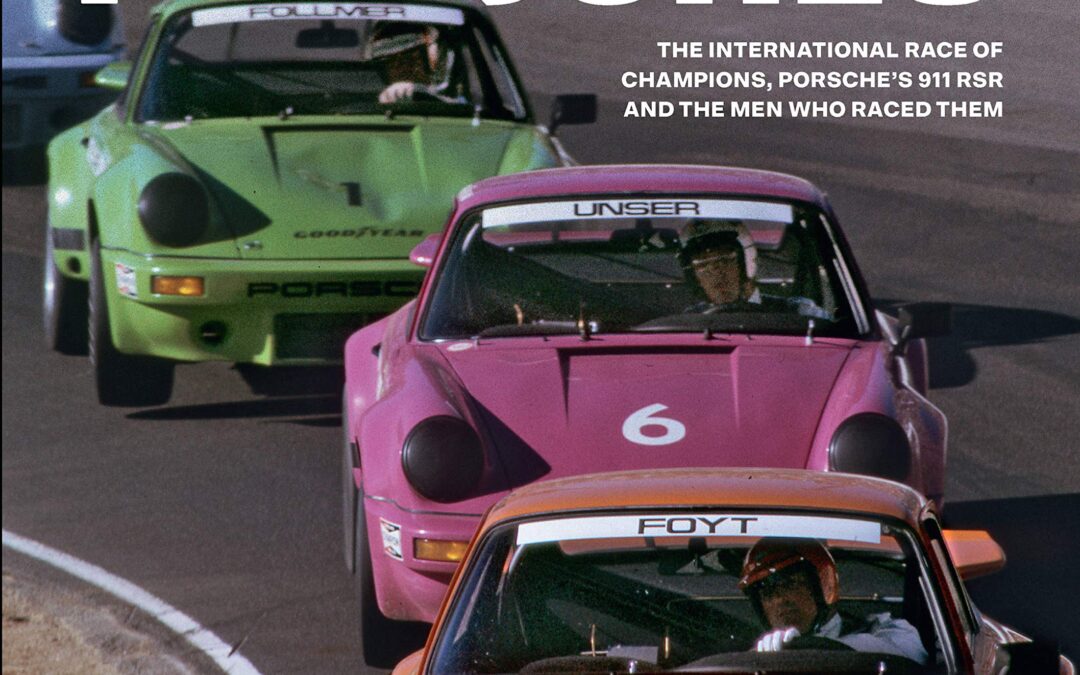
The IROC Porsches chronicles the original International Race of Champions 1973–74 season, in which the world’s top drivers battled in identical Porsche RSRs to claim the title of world’s greatest racing driver.
The Porsche 911 is among the most historic, sought after, and read about cars in history. Early cars are now highly valued collectibles, and modern 911s remain front-line international GT racing cars. There is considerable worldwide interest in Porsche racing activities, from factory entered and sponsored teams to the club-level racing scene.
It is against this rich racing background that The IROC Porsches relates one of the most interesting and storied episodes in 911 racing history. The premier season of the International Race of Champions series was founded around purpose-built, virtually identical 1974 3.0-liter Porsche 911 RSR racing cars to be driven by racing greats from IndyCar, Formula 1, NASCAR, and other international racing series. The premise was simple and brilliant: put the world’s best racing drivers in identical cars and the series winner could claim “best in the world.” Former racing driver, mega businessman, and racing team owner Roger Penske was the original force behind the series, and he worked directly with the Porsche factory to get these special IROC Porsches designed and built.
The depth of talent and breadth of racing disciplines embodied in the series was stunning: Emerson Fittipaldi (Formula 1), AJ Foyt (Indy), Richard Petty (NASCAR), Al Unser (Indy), George Follmer (Can-Am), and more. The drivers’ incentive to compete was manifold, first being to demonstrate the talents and abilities of their own particular brands of racing. Not to be understated was the draw of significant payout to winners. Consummate Porsche racer Mark Donohue won the first year’s championship.
The IROC series would carry on several decades, but never again would it feature Porsche and never again would it field such a diverse selection of race drivers. That first season was truly lightning in a bottle.
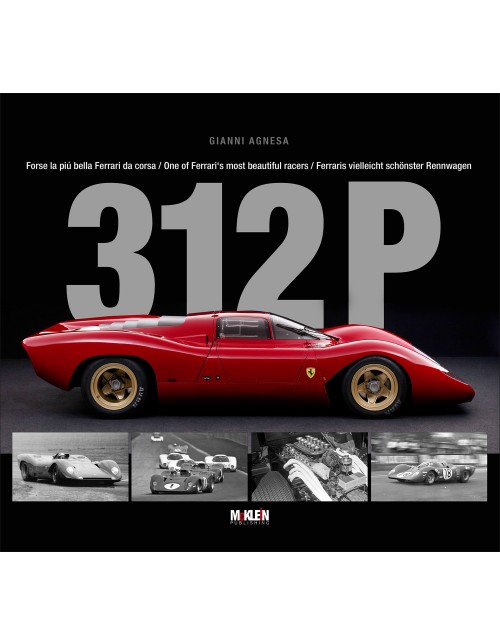
With racing cars being built mainly for performance, only a few of them combine this with admirable beauty. Ferrari’s model 312 P is definitely such an example–thanks to the work of its designers Giacomo Caliri and Edmondo Casoli, but also Enzo Ferrari, who tried to stop the team adding wings or other aerodynamic additions to its beauty–even if they might have improved the car’s performance.
The 312 P was built by the Maranello company for the 1969 World Sports Car Championship and powered by a stunning 3-litre V12 engine. A short development period and a small budget led to a season of mixed results where, except in Monza and at Le Mans, only one car was sent to the races to take on all the other teams. Its official career ended when the bigger 5-liter 512 S came for the 1970 season to fight the Porsche 917s.
This book by Gianni Agnesa tells the story of the car–of which only three examples have been built–in every detail, from the very first test, through every race they did with the factory team or later when the North American Racing Team took over the cars. It gives short portraits of the drivers of the 312 P, such as Chris Amon, Mario Andretti, Pedro Rodriguez, Peter Schetty, Mike Parkes, Tony Adamowicz, Chuck Parsons or Sam Posey. The 264-page volume takes us right up to today and the one example that is still used on some historic events. The large-format, high quality book produced by McKlein comes in a slipcase and is illustrated by many previously unseen images.
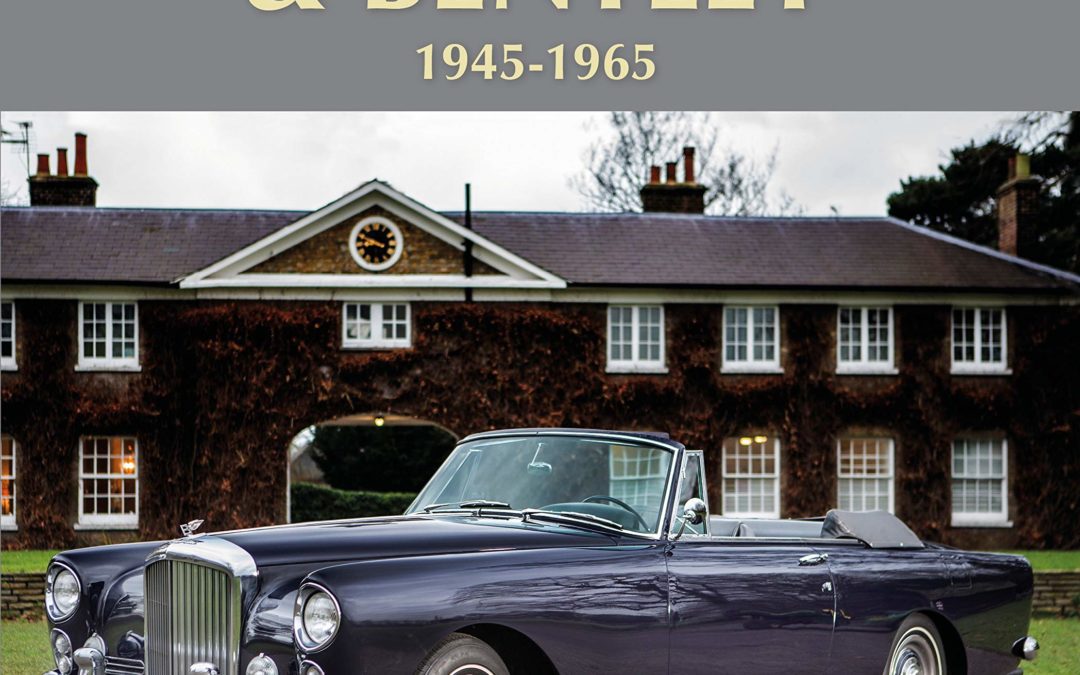
Rolls-Royce and Bentley relied upon standardised body designs after 1945, but for the next two decades both marques also supplied chassis frames separately, and it was possible to have these clothed with coachwork by bespoke coachbuilders like, for example, Mulliner, Park Ward and James Young in Britain, or Graber, Farina and Franay in Europe.
Many buyers took this route, and this highly illustrated book bears witness to the wide variety of styles that were built in this fascinating period. Chassis number lists for each coachbuilder, both in Britain and overseas, identify their creations, to make this a comprehensive and essential companion for anyone interested in Rolls-Royce and Bentley in the postwar era. Coachwork on Rolls-Royce and Bentley, 1945-1965 joins the author’s recent work Coachwork on Derby Bentleys 1933-1940 in our list.
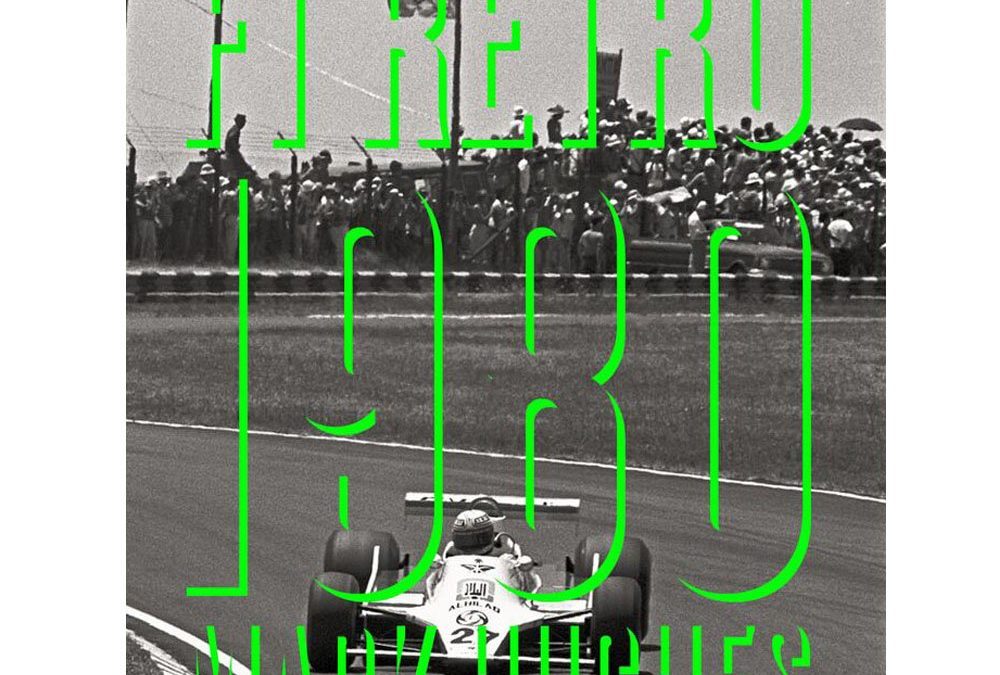
The much-anticipated second of Mark Hughes’ F1 Retro series of books that take an F1 season of the past and put it under the microscope using today’s knowledge. With this unique approach F1 Retro 1980, published by Motor Sport magazine, makes an absolutely last-word, multiple-layered account of the romance, politics, personalities and technicalities of the 1980 season. All wrapped in a beautifully-produced and designed package that is a tactile and visual delight and a wonderful companion to F1 Retro 1970. Evocative and in-depth, F1 Retro 1980 puts the events of the time into a historical perspective as it tells the fascinating story of a defining season in the sport’s history. This is done from multiple perspectives: -Vividly evoking the era, one that cast the drivers in the role of ruthless mercenaries in a time of commercial electrification, placing them between the closely-bonded romantics of a previous dangerous age and the data-driven professionals of today. -The highly charged political battle for the sport’s control that would come to define the F1 of the 21st century. -The way that this dovetailed with two immature but potent technologies, turbo charging and ground effect aerodynamics. -Race-by-race analysis with supporting data, highlighting car and team-mate performance comparisons. -Deep technical insights on the cars, engines and aerodynamics, the latter explaining the phenomenon of ground effect, why each car worked or didn’t. -Driver and engineer interviews, including world champion Alan Jones and the creator of his Williams FW07, Patrick Head. -A 21st century CFD analysis of the championship-winning Williams FW07. -Reproduction of contemporary Williams documentation and technical drawings. Rich in anecdote, analysis and insight, F1 Retro 1980 is much more than just a nostalgic trip – although its beautifully presented photography makes it that as well – but a unique and definitive treatment of a snapshot in F1 history.
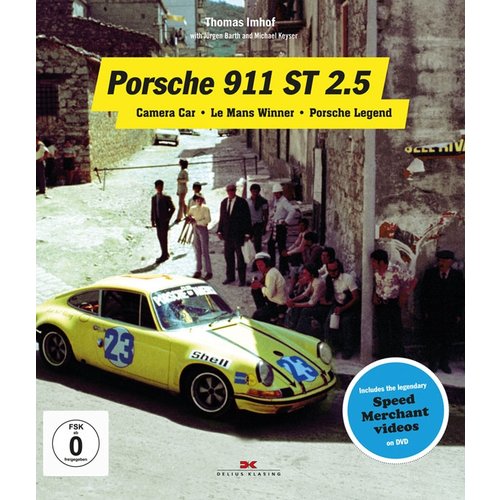
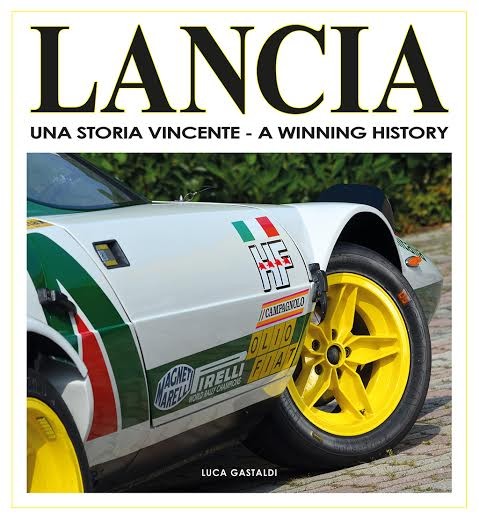
Lancia – Una storia vincente/A winning history
is a book dedicated to the racing history of the famous Italian brand.
The Lancia adventure in motorsport begins in the first decades of 1900, when some independent drivers choose the Vincenzo Lancia’s cars to brave the most important races of that pioneering era.
Later, after the death of Vincenzo, his son Giovanni decides to increase the racing activities. The Lancia official racing team born at the beginning of the 1950s. They debut at the 1951 Mille Miglia race, which was officially entered by two Aurelia B20 Gts especially setup for this long Italian race.
Secondly, in 1952, Vittorio Jano was given the task of designing a new sportscar. The D20 debuted at the 1953 Mille Miglia and it won the Targa Florio. From the D20 derived the D23, then D24 that exploited the technology available at the time in the best way.
D24 meant the end of the Lancia sportscar programme, for on 18th October 1954 the company announced its retirement from sportscar racing in order to pursue its ambitious project in Formula 1.
The single-seater which took Lancia into the highest category of motor-racing was extremely advanced for its time. It was called D50 and debuted at the 1954 Spanish Grand Prix in Barcelona, the last round of the Championship.
On 26th May 1955, Gianni Lancia was in shock for the loss of his driver Alberto Ascari, dead in Monza: a tragedy that made him withdraw from racing completely and almost immediately. At the time Ferrari was in grave difficulties and Lancia decided to donate its D50s, spares, equipments and blueprints to the Cavallino. Vittorio Jano himself moved to Maranello in order to develop the D50s to allow them to enter the 1956 season.
Nearly ten years would pass before Lancia approached racing once more. The racing versions of the Aurelia and Appia cars were the main choice for gentlemen drivers who raced both on track and road. During the Sixties, the HF Squadra Corse racing team was founded: initially a private venture only flanked by Lancia, with the birth of the Fulvia Coupé (1965) it was officially incorporated by the firm and managed by Cesare Fiorio.
It was the birth of a new era, a decade of success achieved by the Fulvia and the Stratos. From Formula 1 in the Fifties, Lancia decided to move to the International and World Rally Championships between the Sixties and Seventies. And finally in the Eighties and until the beginning of the Nineties with the 037, Delta S4, Delta 4WD and Delta Integrale models.
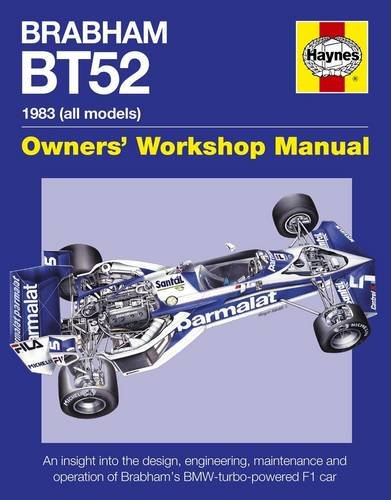
An insight into the design, engineering, maintenance and operation of Babham’s BMW-turbo-powered F1 car
Designed to suit new regulations, after ground-effect cars were banned at the end of 1982, the BT52 was very distinctive, with short, angular sidepods and a dart-shaped profile. During the 1983 season, the innovative Brabham team, with now F1 supremo Bernie Ecclestone at the helm, introduced the first high-pressure fuel rig seen in F1, to speed up refuelling stops, and used ‘ovens’ to pre-heat tyres prior to pitstops. This manual provides a fascinating insight into the design, evolution, operation and maintenance of the Brabham BT52.

Produced from 1959 until 2000, the classic Mini is loved by millions of owners, previous owners and enthusiasts. The Mini’s creator, Alec Issigonis, was given a free hand to make a proper small car and his innovative design not only redefined the family car, but also started a revolution as a performance car. Classic Mini Specials and Moke explores the diverse range of vehicles that used the Mini shape, as well as the only variation actually designed by Alec Issigonis, the Mini Moke. In addition to the famous race and rally cars, coachbuilt conversions and highly modified saloons and commercials, Keith Mainland looks at overseas Mini and Moke production and the many factory-produced limited edition Minis. There is also advice about buying and owning your own special Mini.

Recognized as one of the best fighters of the 1990s, the Su-27 “Flanker” is a single-seat supersonic interceptor that is often declared the finest and most successful fighter of the Cold War era. Designed by Sukhoi OKB, the imposing fighter quickly gained popularity and respect from countries all across the globe.
Intended to be a direct competitor to the new generation of American fighters such as the F-15, the Su-27 was designed with outstanding range, heavy armament, and high agility. Excellent performance, handling, and serviceability have made the aircraft popular with its pilots and ground personnel alike. Equipped with an analog fly-by-wire control system, a full avionics suite, and up to 10 air-to-air missiles, the Flanker also features a rearward-facing radar between the engines allowing it to fire at targets behind the aircraft.
Outfitted with two Lyul’ka AL-31F turbofans, each 12,500 kgp (27,557 lb st) with afterburning, the Su-27’s high thrust-to-weight ratio and refined aerodynamics allow superb flight characteristics at high angles of attack. Yefim Gordon and Peter Davison are the authors of several books on Soviet aircraft including the Specialty Press titles Mikoyan Gurevich MiG-29 Fulcrum and Mikoyan Gurevich MiG-15 Fagot.
Over 300 photos illustrate the story of the Su-27. Topics covered include design, development, structural detail, international production, trials, upgrades and generations, comparisons, overseas sales, and much more. This book is a must have for all warbird enthusiasts!
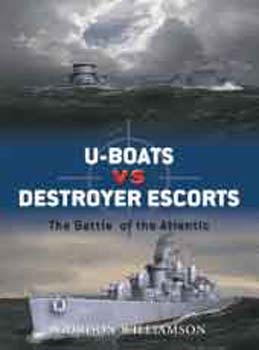
Winston Churchill claimed that the “U-boat peril” was the only thing that ever frightened him during World War II. A formidable foe, the U-boat was developed from a small coastal vessel into a state-of-the-art killer, successfully stalking the high seas picking off merchant convoy ships. It was not until the destroyer escort was introduced, alongside the development of destroyer groups with dedicated anti-submarine tactics, that there was an effective means of defence and attack against the U-boat peril.
Gordon Williamson describes the design and development of these two deadly opponents, their strengths and weaknesses and of their tactics, weaponry and training. He provides an insight into the lives of the Allied Navy and Wolf Pack crews as they played their deadly games of cat and mouse on the high seas, gambling not only with their lives but with the fate of their nations.

Whether it’s a new Formula One V10 wailing at almost 20,000rpm or the metallic howl of a classic V12, there is nothing on earth like the sound of a racing car at full speed – and if it’s a bright red Ferrari screaming by flat-out, then so much the better.
“Red Noise” has been produced by broadcast audio specialists to bring those sounds right into your living room, your car or your stereo headphones. It utilises incredible recordings made in areas that the general public can never hope to reach….with microphones mounted on the trackside guard rails, and even from right inside the famous Monaco tunnel!
Listen to the sounds of Ferraris, Maseratis and Alfa Romeos spanning more than 75 years of motor racing history and featuring the world’s most famous Grand Prix cars.
This is a genuinely unique aural experience, so push the ‘play’ button, close your eyes and let your imagination and “Red Noise” take you right to the trackside.
Ferraris – Old and New1. See Red, Hear Red! The Vintage Sports Car Club stages an annual meeting at Donington Park that is themed around Italian racing cars. ‘See Red’ is the name of the VSCC meeting and we went there to give you the chance to ‘Hear Red’ ! First there’s the harsh engine notes of a 1980 Ferrari 312T5 ‘flat-12’ (a car actually driven by Gilles Villeneuve!) This is followed by an ex-Michael Schumacher team car from 2002 which we hear idling, picking up the revs, warming up, then finally pulling out of the pits with that distinctive V10 howl.
2. Monaco Ferrari Parade There was a fantastic gathering of Ferraris at the Monaco Historic Grand Prix in 2004. We were there to record all those incredible sounds! Cars ranged from the very first Type 125 1500cc supercharged GP car as driven by Alberto Ascari to a 21st-century Schumacher V10. In fact, there were no less than five vee-tens on hand – two Eddie Irvine cars from 1997 and three Schumacher cars from 1998/99 and 2000.
3. Picking up the Pace More from La Piscine as the real demonstration got under way and the cars picked up to racing speeds. No wonder the Italian commentator was getting excited!
4. Old and New in Action Old and new cars take La Piscine en masse. The field includes both four-cylinder and V12 cars from the ‘fifties, a 3-litre Type 312 V12 from 1968 and no less than seven Type 312 flat-twelve ‘boxer’ engine cars. From more recent times there were V12s as driven by Michele Alboreto in 1987, Nigel Mansell in 1990 and Alain Prost in 1991. And last, but very far from least, were the five Irvine and Schumacher vee-tens! They all mean music to the ears of the ‘Ferraristi’….
5. More from Monaco More ‘red noise’ from the Monaco 2004 Ferrari tribute high-speed demonstration laps. Similar to the previous tracks but too good to waste – especially as we were recording with microphones actually right on the Monaco trackside guard rails!
6. Flat-Out Red! And now for a change of recording point – here are Ferraris- old and new – passing at speed on the Monaco start/finish straight.
7. Generations Apart A 1999 ex-Schumacher Ferrari V10 takes La Piscine in conjunction with a rear-engined Ferrari 246 ‘Dino’ V6 that Italy’s Lorenzo Bandini took to second place here at Monaco in 1966. Then comes a 2.5 litre Ferrari Type 625 – the car that Frenchman, Maurice Trintignant, won Monaco with in 1955. The old front-engined ‘four’ takes La Piscine in conjunction with another modern Ferrari V10.
8. The Ferrari Type 312 V12 Sit back and listen to the first Ferrari Type 312 warming up and blasting through the Monaco tunnel.
9. Jackie Ickx Remembers Belgian Grand Prix and Le Mans star, Jackie Ickx, was a young Ferrari driver in the early nineteen-seventies. He remembers those times for us and tells us what it was like to race at Monaco back then.
10. Flat-Twelve Ferraris Not until Ferrari re-designed its 3-litre V12 did they start scoring World Championship successes again. It powered Niki Lauda to world titles in 1975 and 1977, as well as Jody Scheckter in 1979. The engine had a distinctly harsh note. We hear it warming up at Monaco, then making several echoing passes through the Monaco tunnel and, finally, negotiating the La Piscine sequence of tight turns.
11. The ‘Other Flat-Twelve’ There was another ‘flat-twelve’ built in Italy during the seventies, this one by the Alfa Romeo team in Milan. This is what that car would have sounded like back then, warming up and then blasting off, flat-out.
12. The Last F1 Vee-Twelves Ferrari stuck with V12 engine power right through the mid-nineties with Frenchman, Jean Alesi and Austria’s Gerhardt Berger driving the Type 412 team cars until the end of the 1995 season. By then, it was obvious that the V10 layout was definitely the most efficient of all of the Formula One options. Even so, the heavier, longer V12 took the 412 to a number of GP wins – and it sounded great in the process!
13. Into the 21st Century This is the unmistakable sound of V10-powered Ferraris howling by our microphones on the trackside barriers. First we hear some individual passes, then a whole group of vee-tens finish the track. These are all cars driven by either Michael Schumacher or Eddie Irvine between 1997 and 2000.
Maserati from Modena
14. Vintage Red Maserati is one of the oldest names in motorsport. Listen to a couple of vintage Maserati racers warming up – a four-cylinder 4CLM from 1939 and a six-cylinder 6CM from the 1937 season. These supercharged 1500cc cars would have raced in the ‘voiturette’ class – the nineteen-thirties equivalent of the Formula Two (or GP2) category.
15. A Fifties Favourite The six-cylinder Maserati 250F was one of the favourite 2.5 litre Formula One cars of the fifties – both with the fans and with its drivers. Listen to a group of them fire up, pull out of pits and then pass by on a flying lap.
16. Maseratis En Masse! A full field of twenty cars in a ‘Maserati-only’ race at the Vintage Sports Car Club’s ‘See Red’ event at Donington Park. They range from pre-war four, six and eight-cylinder supercharged cars to a whole pack of what is one of the most-admired Grand Prix cars of all time, the six-cylinder Maserati 250F. Hear them on the parade lap, and in race action through Redgate Corner.
17. Maserati at Monaco The throaty sound of a six-cylinder Maserati 250F as it warms up, followed by the rumble and the roar of a full field of ‘fifties Formula One cars on their warm-up lap.
18. Monaco Shark Hunt! The three-pronged trident is famous as the weapon of Neptune, or Poseidon – the God of the Sea and it has also always been the emblem of Maserati. So it’s perhaps appropriate that we hear a pack of 250F Maseratis chasing a Ferrari Type 555 ‘Squalo’ – or ‘Shark’ through the tight left-hander before Monaco’s Rascasse hairpin.
19. GP Rivals Warm Up A Bugatti Type 35 warms up in the Monaco pits. It carries the racing blue of France where the cars were built. Then an Alfa Romeo P3 is push-started into life and joins the mechanical chorus.
20. Right on the Rail! A full field of more than thirty great cars of ‘the golden age’ rumble around on a warm-up lap, take the start and attack the opening laps of a race around the Monaco streets. You are right up with the action thanks to our stereo microphones positioned right on the trackside safety barriers.
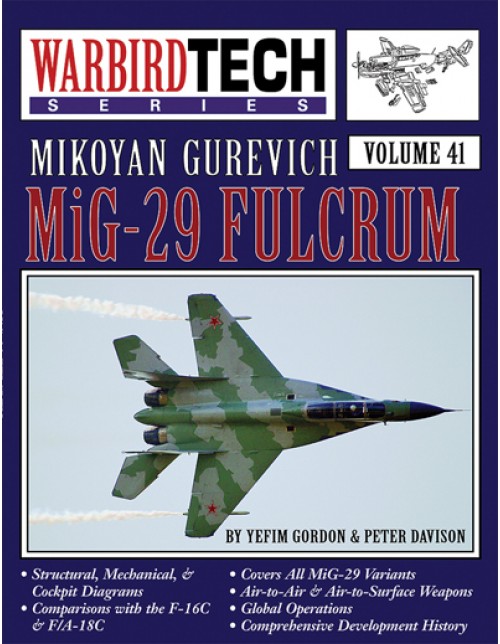
In the late 1960s the Soviet Union was working on a fourth-generation jet fighter concept. These aircraft would form the backbone of Warsaw Pact air forces in the next decade. The Soviet aerospace industry began considering enhancing combat capabilities with new air-to-air missiles and a sophisticated weapons control system. Thus the MiG-29 was born. High maneuverability, a high thrust-to-weight ratio, a wide speed range, and special short-range missiles are just a few of the MiG-29’s special characteristics.
This book extensively covers the concept, variants, upgrades, carrier trials, service, sales, and what the future holds for the MiG-29. Find out how the MiG-29 paved the way for aerodynamic refinements, improved handling, stability, and technological changes that simplified the building process. Learn details on the MiG-29’s engine and controls. Powered by two Klimov NPP (Izotov) RD-33 afterburning turbofans rated at 5,040 kgp (11,111 lb st) at full military power, and armed with an internal gun, short- and medium-range air-to-air missiles, unguided rockets, and free-fall bombs, the MiG-29 is truly a marvel in military aircraft. Authors Yefim Gordon and Peter Davison use over 300 photos to illustrate the story of the MiG-29. Topics covered include design, development, structural detail, international production, trials, comparisons, overseas sales, and much more. This book is a must have for all aircraft enthusiasts!







